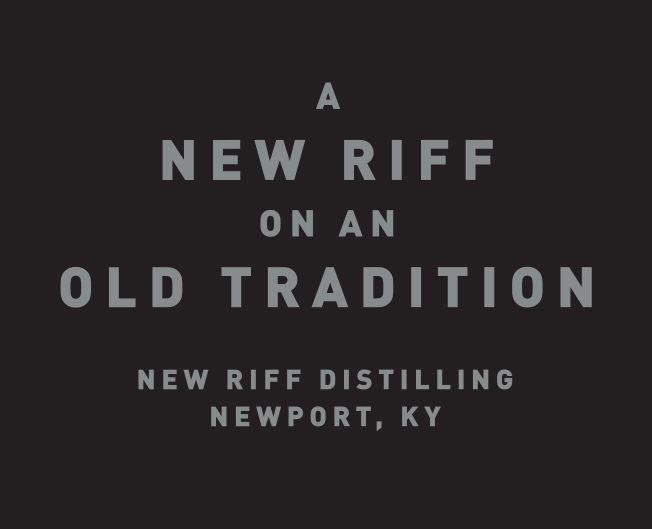Become a New Riff Influencer
New Riff Distillery Expands with Construction of Additional Barrel Warehouse in Northern Kentucky
Newport, KY (April 21, 2022) – – – New Riff Distilling announced construction of a new barrel warehouse facility in Silver Grove, Kentucky, a short drive from the distillery and existing warehouse. The 10 acre site will be capable of holding more than 40,000 barrels of whiskey with room for future expansion. For more information, visit www.newriffdistilling.com.
“Last year we expanded our distillery to increase production,” said co-founder Ken Lewis. “With our Newport facility already nearing capacity before that, it is time to add more storage and we’re happy to be building in Campbell County.”
The 55,000-square-foot pre-engineered metal building is intended to be ready for use in spring 2023, Lewis said. JDL Warm Construction is the general contractor for the project.
Since its founding in 2014, New Riff’s products have attracted a wide following, with demand outpacing supply. New Riff is currently available in 15 states with distribution extending to Illinois later this year. Lewis said the recent production expansion and increased storage capacity will allow the brand to better meet demand for New Riff products.
The 2021 expansion project increased the distillery by 800 square feet, allowing for the addition of three additional fermenters and increasing production to 12,000 barrels per year, up from 8,000 previously.
New Riff (Newport, KY):
Kentucky born and urban bred, New Riff is an independently-owned distillery in Northern Kentucky — the gateway to bourbon country. In 2014, founder Ken Lewis, a visionary Kentucky liquor retailer and entrepreneur, saw a need for a new riff on an old tradition when it came to Kentucky bourbon. The Newport, Ky., distillery produces bourbon, rye and Kentucky Wild Gin. Bourbon and rye are made with traditional sour mash methods and bottled-in-bond without chill filtration. Bourbon and rye are also available in single barrel selections, and the distillery boasts a popular private barrel selection program. New Riff sources its water from an aquifer under the distillery, accessed via a 100’ deep private well and providing water with four times as much dissolved minerals than found in other water supplies. New Riff believes in transparency, so all products feature an age statement and the mashbills are public. The modern venue hosts a variety of events and offers an on-site bar, The Aquifer.
Newport distillery returns with high marks from prestigious competition
Newport, KY (April 12, 2022)
The spirits might be new riffs on old traditions, but New Riff Distilling is making a new tradition out of medaling at the San Francisco World Spirits Competition. In the 2022 awards announced today, New Riff earned 10 medals including one Double Gold — the highest ranking — and nine Gold medals.
“For us at New Riff, SFWSC is not only the most prestigious spirits competition in the world — it is our annual measuring stick, a chance for our yet-young distillery to go up against the best in the world from the toughest judges,” said co-founder Jay Erisman. “When the entire portfolio wins Gold Medals, we know we’re on the right track!”
New Riff Distilling’s Kentucky Straight Rye Whiskey Bottled in Bond received a Double Gold award and will be featured at The Aquifer, the distillery’s tasting bar.
Spirits receiving gold medals include New Riff Kentucky Straight Bourbon Whiskey; New Riff Kentucky Straight Bourbon Whiskey Single Barrel; New Riff Kentucky Straight Rye Whiskey Single Barrel; New Riff Balboa Rye; New Riff Malted Rye; New Riff Red Turkey Wheated; New Riff Malted Wheat “Maltster”; New Riff Kentucky Wild Gin; and New Riff Kentucky Wild Gin Bourbon Barreled.
Founded in 2000, the SFWSC is one of the world’s most respected spirits competitions. During the competition, blind tastings are conducted by a thoughtfully curated list of judges, each with a seasoned, trusted palate.
Medal winners range from the most renowned international distillers to small-batch producers. Earning an SFWSC award is a testament to hard work and an indicator of the highest caliber of quality. Visit sfspiritscomp.com to review the complete list of 2022 results.
New Riff (Newport, KY):
Kentucky born and urban bred, New Riff is an independently-owned distillery in Northern Kentucky — the gateway to bourbon country. In 2014, founder Ken Lewis, a visionary Kentucky liquor retailer and entrepreneur, saw a need for a new riff on an old tradition when it came to Kentucky bourbon. The Newport, Ky., distillery produces bourbon, rye and Kentucky Wild Gin. Bourbon and rye are made with traditional sour mash methods and bottled-in-bond without chill filtration. Bourbon and rye are also available in single barrel selections, and the distillery boasts a popular private barrel selection program. New Riff sources its water from an aquifer under the distillery, accessed via a 100’ deep private well and providing water with four times as much dissolved minerals than found in other water supplies. New Riff believes in transparency, so all products feature an age statement and the mashbills are public. The modern venue hosts a variety of events and offers an on-site bar, The Aquifer.
The United States Bourbon industry has experienced incredible growth in the past decade. Today, there are many producers and recipes to choose from with a wide range of flavors to taste, all made from at least 51% corn.
However, there are a lot of misconceptions in regards to Bourbon aging. We want to cover a few basic facts and old traditions when making Bourbon.
At New Riff, we use full-size, 53-gallon new charred oak barrels, similar to other Bourbon distilleries in the Kentucky industry. Our barrels are aged beyond two years—in fact, all New Riff whiskey is aged for at least four years—for whiskey maturity. But behind the age statement, there’s more than meets the eye.
Kentucky Bourbon Aging Explained
Whiskey drinkers love Bourbon because of its complex, sweet flavors. Where do these flavors come from?
Under federal standards, Kentucky Bourbon must be aged in new charred oak barrels for aging at no greater than 125 proof (62.5% alcohol-by-volume) during the distillation process and must be made of at least 51% corn. Straight Bourbon must be aged for at least two years. The distillate – the Bourbon after it has been distilled, but before it has entered the barrel for aging – is clear in color. It also only contains the flavor of the grains where it was distilled.
Multiple distilleries offer unaged whiskey, but many suggest saving your money for the traditional process. Save your money because the barrel is where most of the Bourbon flavor comes from. What happens when straight Bourbon is aged in barrels? How can a beverage start with one taste, and change into something delicious by sitting in a new oak barrel?
Bourbon Barrels
The amount of malted barley in the mash bill is not the only element that gives Bourbon whiskey its distinct flavor. The barrel that the Bourbon is aged in imparts a lot of the flavor that we all know and love. Standard Bourbon barrels hold 53 gallons of Bourbon, and are mostly assembled by hand using new charred white oak. The barrels do not have to be 53 gallons, but this is the typical standard for many distillers. The “new” in the phrase means that these barrels have never been used before.
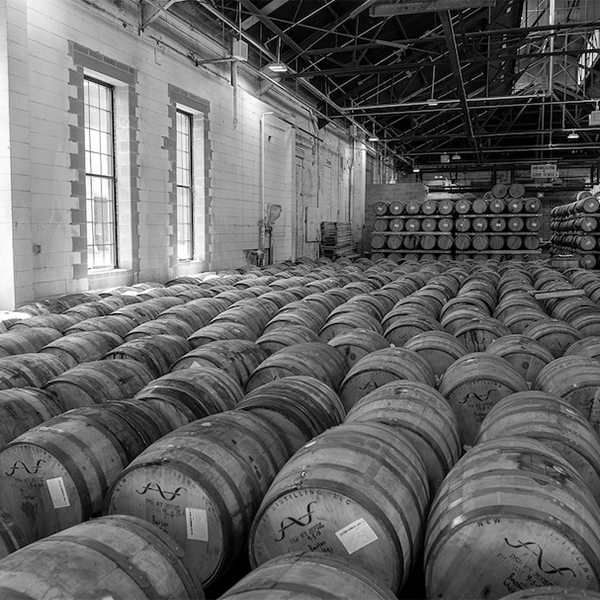
The majority of distilleries use the famous barrel manufacturer (called a cooperage), Independent Stave Company (ISC). At New Riff, we work with ISC as well as Kelvin Cooperage in Louisville to source toasted and charred oak barrels, including generous amounts of extra fine quality barrels made with extra air-dried oak staves. All of our whiskeys utilize a variety of specific barrel types and styles.
Bourbon goes into the barrel clear in color and flavored from the grain only. It gets all of its color, its woody and oaky flavors, as well as overall maturity of flavor, from these types of oak barrels. Once the barrels are used for Bourbon they are shipped from the United States to Scotland and many other countries to serve as “used” barrels by other spirits industries.
These used barrels are also a popular option for wineries and, especially, breweries. Since Kentucky straight Bourbon whiskey requires a new barrel every time, the barrels can’t be used for Bourbon a second time. Due to most of the flavor of the barrel going into the Bourbon, the barrel has less to contribute to the next spirit, and the aging time for Scotch in used barrels is longer.
From the beginning, New Riff sought to use a wide variety of new charred oak barrels from reputable cooperages, in an ongoing quest to find the best barrels for our whiskey. But we started out following the “Keep It Simple, Stupid” approach, and used a very basic, industry-standard barrel, which gave us a baseline to work with after a few years of aging Bourbon.
Only after that, can a distiller make wise choices about other barrel techniques. Today, we use 100% toasted oak, along with a few barrels using extra-air-drying on the staves. This matrix of barrels delivers a complex, comprehensive array of maturation influence upon all our whiskeys.
The Char
Just as not all whiskey is bourbon, not every barrel is a bourbon barrel. Every oak barrel must be charred on the inside before it can age Bourbon. An optional step is toasting, which brings additional layers of flavor. There are multiple charring levels, and the level varies depending on the distillery. A charred barrel gives Kentucky Bourbon that smoky flavor while adding sweetness and hints of toffee and vanilla notes.
These sweet notes that whiskey lovers crave come from the wood’s sugars that caramelize during the toasting process. Many distilleries—including New Riff—use a number 4 char, where flames are shot through a barrel for 55 seconds.
Distillate
Once the oak barrels are charred, they’re ready to be filled with the distillate. Many considerations must be made during this step of the Bourbon production process. Almost all distilleries use a barrel entry proof between 110 and 125 proof (55%-62.5% alcohol-by-volume). This range of distillate proof creates a balance of beneficial compound extraction, tannins, and color.
Barreling Proof
An important parameter of the barrel aging process is the proof of the whiskey when it goes into the barrel. Not all whiskey is appropriate to use. By law, the whiskey can enter the barrel at no more than 125 proof (62.5% alcohol-by-volume), and the big distilleries mostly choose this to save money on barrels.
At New Riff, we choose to barrel at a fairly low 110 proof (55% alcohol-by-volume). This is because a specific range of flavors is more water-soluble at a lower proof. Most of all, research has shown that a whiskey barreled at a lower proof may age more quickly and “show better younger” than a higher barreling proof. It costs us more in cooperage to mature our whiskey this way, but it delivers the flavors we want.
Aging Warehouse
After the distillate is added to the barrels, they are left to age and mature in Bourbon warehouses or a rick house. Many distilleries have multi-floor warehouses with many rick levels where Bourbon barrels sit to age. Bourbon barrels filled with the same whiskey can age for the same period in separate parts of the warehouse, which means that the result can taste drastically different.
So, How Long Is Bourbon Aged?
Bourbon whiskey has typically aged a minimum of two years, though most brands are aged at least four years and often longer than that.
The drastic change in flavor profile comes from how temperature affects the barrels. Typically, there is no temperature regulation in aging warehouses. During the winter months the barrels contract and then expand once the summer heat approaches. As a result, the barrels “breathe” Bourbon in and out, creating evaporation that distilleries call “Angel’s Share.” The name is given to the portion of Bourbon that is lost to evaporation as the spirit matures. Bourbon aged on the cooler, lower floors of the warehouse can taste quite different from the same Bourbon aged on the warmer, upper floors.
Bourbons must be aged in a barrel and do not continue to age in the bottle. A Bourbon bottled with an age statement of four years is always a four-year-old Bourbon, even if you keep it in your cabinet for years after that.
Why Do We Age Bourbon?
Bourbon ages to mellow the bite of the alcohol and to add flavor to the spirit. As the spirit rests in its barrel to age, flavors from the wood are drawn out, which makes the whiskey called Bourbon the celebrated elixir that it is.
Is An Older Age Always Better?
Older Bourbon isn’t necessarily better. While some aging is desirable to achieve the best flavor profile, too much aging can actually cause the Bourbon to lose flavor. A great distiller can find the sweet spot in the aging process where the youngest whiskey no longer has its sharp, unfinished taste but hasn’t succumbed to flavor loss from over-aging.
FAQs
- How long is Bourbon aged in barrels?
- Bourbon can be aged in barrels for as little as a few months or as long as a few decades. The best Bourbons are aged for at least a few years where they can mellow and absorb flavor.
- How long is too long to age Bourbon?
- Federal standards dictate that Bourbon cannot be aged for more than 25 years. Experts say that any Bourbon aged more than 15 years begins to lose flavor.
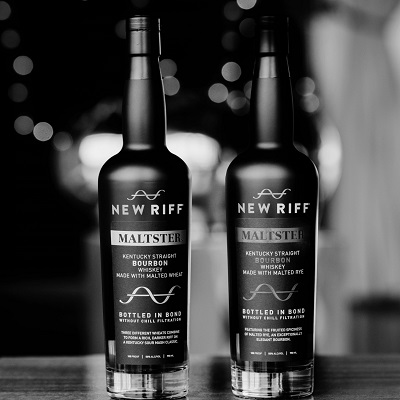 Bourbon enthusiasts are more than familiar with the term “Single Barrel Bourbon.” In fact, single-barrel Bourbons have been quite the popular commodity in the past few years in the world of Bourbon. It’s easy to think that a more specialized version of something must be better, and therefore worth the extra dollars.
Bourbon enthusiasts are more than familiar with the term “Single Barrel Bourbon.” In fact, single-barrel Bourbons have been quite the popular commodity in the past few years in the world of Bourbon. It’s easy to think that a more specialized version of something must be better, and therefore worth the extra dollars.
However, every Bourbon is different in its own right. Let’s review what goes into making a single-barrel Bourbon. There are two primary ways Bourbon is bottled: a single barrel bottling and what we can call for the sake of discussion a “standard” (or multiple barrels) bottling runs. A further category is “small batch” Bourbon, which implies a certain selection process among a smaller number of barrels than a producer’s standard bottling run.
Standard Barrel Bourbon
To be legally produced as Bourbon, the whiskey distillate’s mash bill must consist of a minimum of 51% corn. The remainder of the mash bill can be any cereal grain, including rye, wheat, barley, or others. The grain is then ground in a mill, mashed with water and cooked, cooled and fermented, and then distilled. The distillate is then entered into a new charred oak barrel or cask. The typical “straight” Bourbon is then aged for a minimum of at least two years. The spirit may enter the barrel at no more than 120 proof (60% alcohol by volume) As the distillate ages in the new charred oak barrels, it gains color and flavor due to evaporation and oxidation. The next step is where standard Bourbon tends to differ from a single barrel and small-batch Bourbon.
A particular brand’s standard bottling is a blend of many different barrels of Bourbon. In standard barrel Bourbon batches, the Bourbon is withdrawn from the barrel or cask and diluted with water to be bottled at a minimum of 80 proof (40% alcohol by volume). During this process, Bourbon is withdrawn from multiple barrels into a tank to maintain a consistent flavor. The location of each barrel stored in a warehouse can affect the flavor profile of a single batch. Mixing multiple barrels guarantees similarity in flavor that brands need as a staple of their recipe. This typical or “standard” Bourbon is best in almost any use and is often used to mix with cocktails. New Riff’s Kentucky Straight Bourbon Whiskey is aged four years in 53-gallon toasted and charred new oak barrels before it is Bottled in Bond Without Chill Filtration at a full 100 proof, giving it a savory, spicy, powerful character.
Single Barrel Bourbon
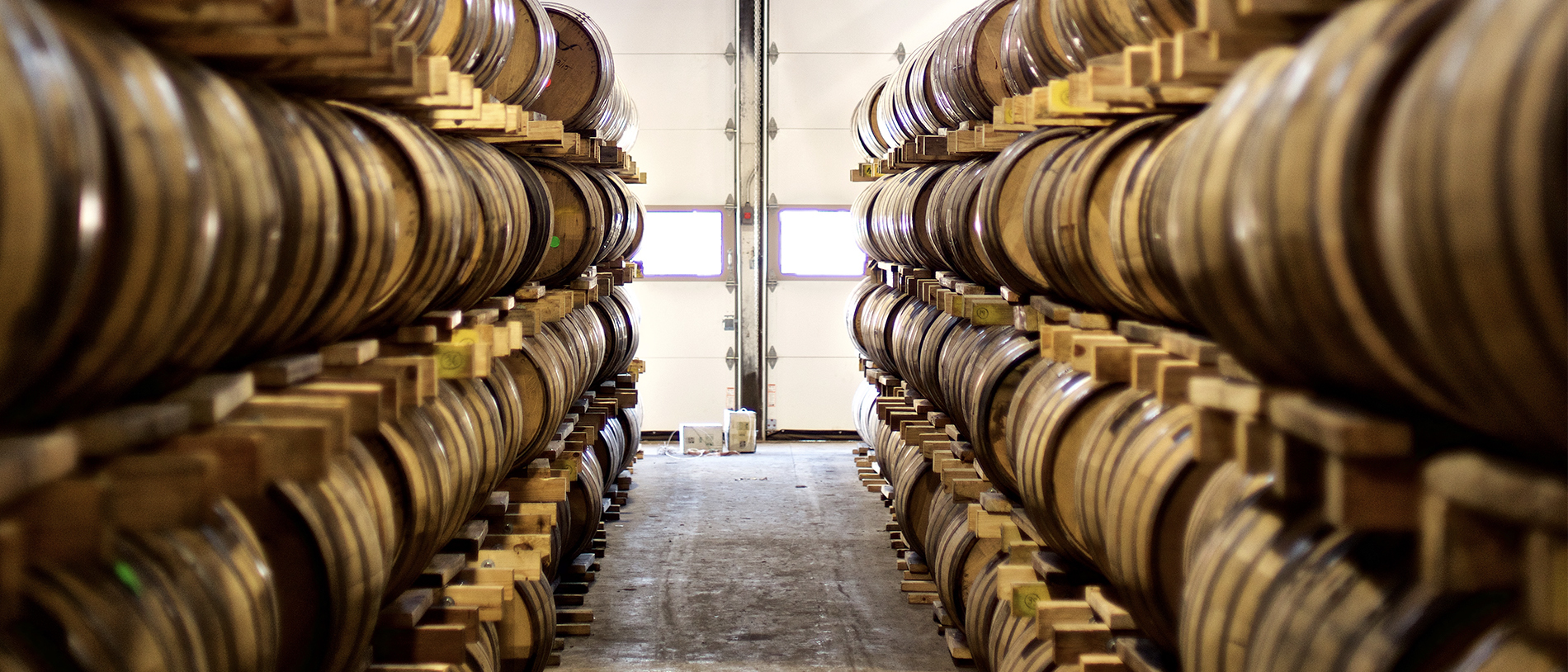 Single barrel Bourbon occupies a similar production, aging, and barrelling process to standard Bourbon. However, single-barrel Bourbons are seen as a premium class of whiskey. Each single barrel bottling comes from one individual aging barrel instead of a blended mix of Bourbons of various barrels. The uniformity of color and taste in single barrel Bourbon is not as apparent across different single barrels because each barrel’s location can drastically change the flavor profile. Although every single barrel owns its specific flavor profile, New Riff’s Single Barrel Bourbon generally shows big and spicy flavors, with a robust and fulsome flavor from start to finish.
Single barrel Bourbon occupies a similar production, aging, and barrelling process to standard Bourbon. However, single-barrel Bourbons are seen as a premium class of whiskey. Each single barrel bottling comes from one individual aging barrel instead of a blended mix of Bourbons of various barrels. The uniformity of color and taste in single barrel Bourbon is not as apparent across different single barrels because each barrel’s location can drastically change the flavor profile. Although every single barrel owns its specific flavor profile, New Riff’s Single Barrel Bourbon generally shows big and spicy flavors, with a robust and fulsome flavor from start to finish.
The whiskey that comes from a single barrel is bottled individually, with each single barrel bottle frequently bearing a barrel number and dates for the aging process. In single-barrel bottles, it is believed that the bottling process from only one barrel contributes to unique characteristics and enhanced flavor notes of that particular Bourbon. New Riff’s unfiltered bottling regimen, used for our Single Barrel Bourbon and all our whiskeys, allows the uniqueness of the barrel to shine through in the glass.
Small Batch Bourbon
Although there’s no legal definition of the term “small batch,” the industry coined it to describe a particular product style within the premium world of Bourbon. Small batch Bourbons are produced by mixing the contents of a small number of hand-selected single barrels, creating a bottled Bourbon with a unique, rich blend.
Compared to the other two types of bottled Bourbons, small batch Bourbon whiskey is a little more complicated. A small batch of Bourbon is basically just a few select single barrels that will, without a doubt, complement and combine well together as a blend of many carefully selected Bourbon barrels. Small batch Bourbon typically consists of no more than ten selected single barrels, although the number of barrels varies from distillery to distillery from two to two hundred or more. The process is basically the same as standard Bourbon but made on a much smaller scale. This allows the small batch product to have a character that’s distinct from the standard product, yet also remains consistent with itself. The careful selection of similar Bourbon flavor profiles means that a small batch of Bourbon itself is rich in flavor while staying unique compared to other Bourbons.
As mentioned earlier, due to the lack of a formal definition, what counts as small batch Bourbons is very subjective. For example, some larger producers will use many hundreds of select barrels and still label the Bourbon as a small batch. It might be a small batch for them, but in the eyes of a smaller producer whose small batch consists of 10 barrels max, it’s massive.
Overall, small batch Bourbon is best for premium purchases and is meant for those who want more individuality in flavor without paying a higher single-barrel price.
Bourbon from New Riff Distilling
Our flagship Bourbon is New Riff Bottled in Bond Without Chill Filtration Kentucky Straight Bourbon Whiskey, in which a bottling run is typically composed of 23-30 barrels. New Riff also has an acclaimed and very popular Single Barrel Bourbon, bottled at barrel proof without chill filtration. Our distillery is a family-owned, Kentucky-bred whiskey distillery that puts a new riff on the Kentucky Bourbon tradition.
Every batch of standard and single barrel Bourbons is forged with conviction. Every bottle is a distillation of who we are.
 How do you prefer your bourbon profile? Do you like more spice or softer notes like vanilla? Do you prefer hints of fruit or notes of flavor from cereal grains? Do you enjoy bold cocktails, or elegant single-barrel whiskey on the rocks?
How do you prefer your bourbon profile? Do you like more spice or softer notes like vanilla? Do you prefer hints of fruit or notes of flavor from cereal grains? Do you enjoy bold cocktails, or elegant single-barrel whiskey on the rocks?
While proof plays a huge role in all of the above, a large chunk of a bourbon’s flavor profile comes from two primary flavor grains – rye and wheat. Maximizing your bourbon flavor palette requires only a small bit of knowledge about how it’s crafted.
Bourbon enthusiasts know that straight bourbon production requires at least 51% of the mash bill to come from corn. The other 49% is made up of other grains including rye, wheat, malted barley or more rarely, other grains including oats or amaranth. There is no legal definition for “high rye” Bourbons but, conventional wisdom suggests that anything over 20% deserves the moniker of “high rye.” When making bourbon, malted barley adds a little extra flavor, and it’s essential for delivering enzymes that free up fermentable sugars that are hidden inside corn, wheat and rye whiskey.
Whiskey Grains Breakdown
For those unfamiliar with straight bourbon, there are many different grains that make up the flavor profile that comes from the extra 49% left in mash bills. Before getting into the difference between high-rye bourbon and more typical mashbills of 12-15% rye, we’ll give you a breakdown of the most commonly used grains to familiarize yourself with the production process.
Malted Barley
We’ll begin with traditional single malts. Historically speaking, Scotland and Ireland produce single malt whiskeys, as well as Japan and Australia. Regardless of their origin, the common thread here is that they are all made entirely from barley (American single malt whiskeys only require 51% barley).
When comparing a light single malt from Scotland and a Japanese single malt, you’ll see that they all share a roasty, toffee-flavored note. Of course, you can find additional flavors and textures as other production methodologies and environmental factors come into play. However, they both share that benchmark flavor characteristic.
Corn Whiskey
Whiskeys labeled as “corn whiskey” are mashed from a minimum of 80% corn, and they can be aged only in used barrels, or are bottled completely unaged. With these whiskeys, you can definitely taste the influence of corn as there is little or no barrel flavors involved.
High-Rye Bourbons
In the past 20 years, more and more producers have turned to making “high rye” Bourbons, made with an increased amount of rye in the mash bill, perhaps 20% or more. They appeal to drinkers who need that extra bite of spice in their bourbon with less sweetness. The higher the rye content, the spicier the bourbon.
For those who need an introduction to high-rye bourbon, try a glass of our flagship New Riff Bottled in Bond Bourbon. Made with a generous 30% high-rye in the mashbill, this unequivocally high-rye Bourbon epitomizes the category, and provides powerful spicy clove and fruit notes alongside rich and honeyed oak thanks to four years aging in our warehouse.
Wheated Bourbons
Why do people go crazy over wheated bourbon? One of the things that distinguishes it from other bourbon is the wheat in the mash, which really does taste a bit like whole wheat bread with honey. However, you won’t need to drop a great amount of cash to taste a good wheat bourbon whiskey. Try our Maltster Bourbon with Malted Wheat for a great high-wheat bourbon.
The Maltster Bourbon with Malted Wheat is a project that explores different malted grains used in the old Bourbon recipe. The unique mash bill offers bold interpretations of traditional Bourbon styles with a darker and deeper version of wheated Bourbon.
From the opening aroma of our Malted Wheat Bourbon, there is shade of dark, husky grains to the whole production; yet it also drinks in a classical Bourbon fashion with plenty of oak. A splash of water releases a whiff of dark fruit. In the mouth, it enters large-scaled and full-bodied, tending to dryness. There’s plenty of oak but, behind that, lies that notion of dark fruit. A wood spice element tinges the finish, which grows on the taster precipitously.
High-Rye Bourbons
Another additional nuance that should be noted is whether a bourbon is considered “high-rye” bourbon. High-rye bourbons mean that there is more rye in the mashbill than normal. However, while one distiller might consider their mashbill of rye high, others might consider that same mash bill to be low.
Distilleries that choose high-rye end up with a whiskey with aromes that are extremely prevalent before you bring your nose to the glass. These aromas snake back outward and upward on the backs of alcohol vapors. High-rye bourbon whiskey produces aromas consisting of baking spices, fruit, grass and other flavors that reappear across the palette when sipped.
High-Wheat Bourbon or Wheated Bourbon
High Wheat Bourbon, more commonly known as “Wheated Bourbon,” is crafted using wheat in place of rye to produce a whiskey that has gentler aromas and a pleasant grassy-grainey note. To many, Wheated Bourbons tend to have smells that are reminiscent of the outdoors. When sipped, Wheated Bourbons can have flavor notes of earthy, minerally, and slightly sweet taste, with a smooth and soft texture as it is swallowed.
What’s the Difference?
To summarize the flavor profiles, high-rye bourbon is loud while wheated bourbon is somewhat tame. Both have their virtues and are worth tasting to see which is best suited for you.
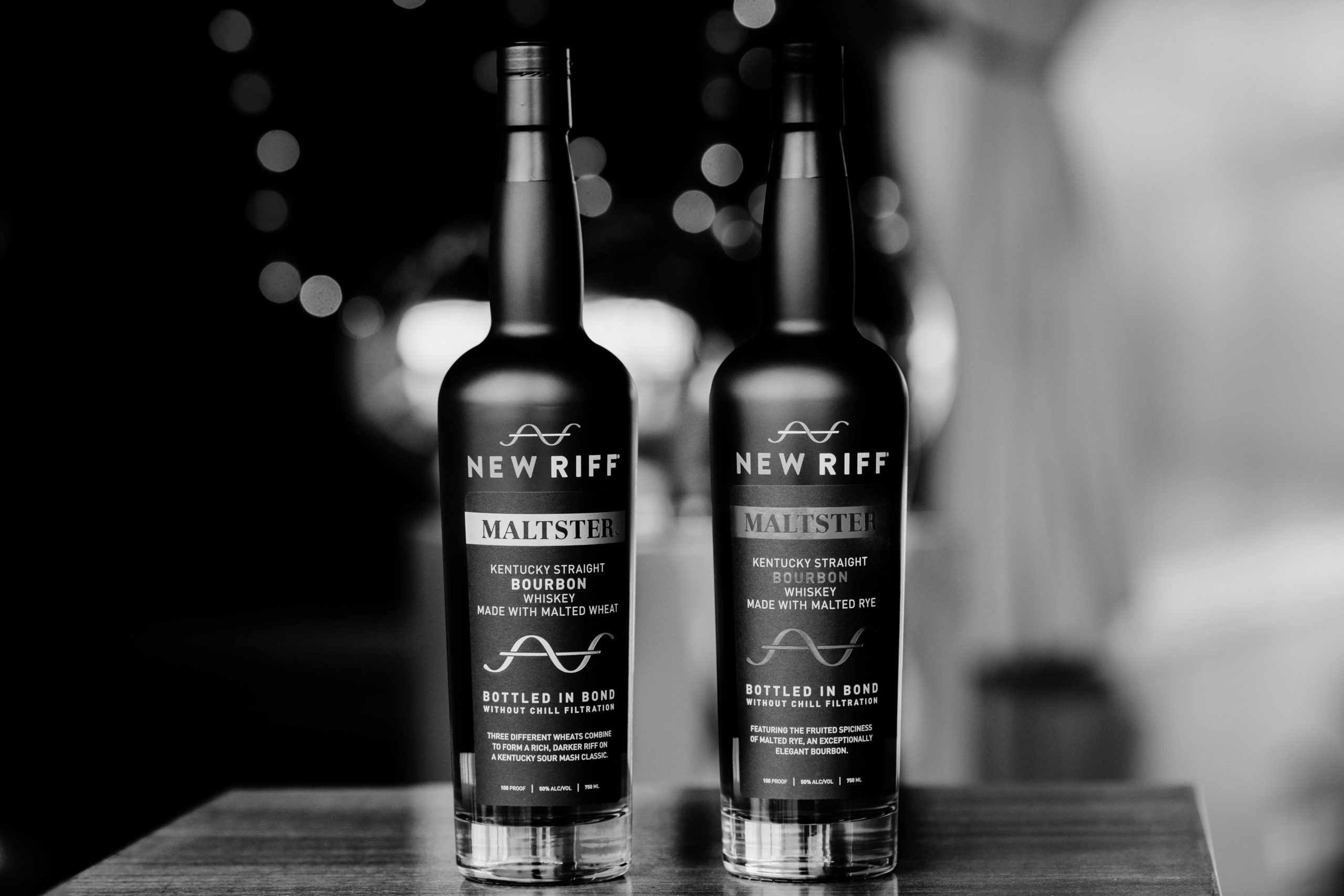 Have you ever wondered what truly makes Bourbon different from other dark spirits? If you think every liquor is the same, think again.
Have you ever wondered what truly makes Bourbon different from other dark spirits? If you think every liquor is the same, think again.
Whiskey comes in many forms, each with their own unique distinctions that set them apart from the others. Bourbon is one of the most common American versions of the dark spirit. Just like every other type of whiskey, Bourbon is also produced in its unique way.
For those who are curious to discover the difference between whiskeys and Bourbon, New Riff has you covered. Read on to discover what truly makes Bourbon, Bourbon.
Who Defines Bourbon Whiskey?
The legal requirements for distilling Bourbon are defined under the United States Code of Federal Regulations. Basically, the defining factor that makes Bourbon a unique whiskey is the law. The Federal Standards of Identity for Bourbon state determine what is and what isn’t Bourbon.
For a whiskey to be considered Bourbon, its mash – the mixture of grains from which the product is distilled – must contain at least 51% corn. The rest of the mash is usually filled out with rye or wheat, and malted barley. However, this mash must also be distilled at no higher than 160 proof and put into a barrel at no higher than 125 proof. No additives must be added to the mash as well.
Additionally, the distilled Bourbon must be aged in new charred oak barrels. Though the law doesn’t specify the species of oak, most distilleries use white oak because it is most suited to building a secure, watertight barrel..
It gets even more complicated than this. To be considered “straight Bourbon,” it must be aged for a minimum of two years in new charred oak containers. If it is aged for less than four years, it must have an age statement somewhere on the bottle that tells buyers how long it was aged.
Some Bourbon may also be bottled in bond, the label for American-made distilled spirits that are aged and bottled according to certain federal standards. Many enthusiasts see this label as an endorsement of quality.
When you purchase a bottle of straight Bourbon that doesn’t state how old it is, you’re likely getting Bourbon that is at least four years old but not much older.
Production Basics
The Bourbon industry has undergone significant development and growth over the years. Bourbon distilleries produce Bourbon that is of great quality and value. However, many new enthusiasts still don’t know how Bourbon is made. Here are the basics; read on to learn the details.
Mash bill of at least 51 percent corn
As stated above, Bourbon has to have a mash bill of at least 51 percent corn. Other grains that make up Bourbon can include rye, wheat, or malted barley.
Aged for at least two years for “straight”
Straight Bourbon has to be aged in new charred oak barrels for at least two years.
Distillation proof of no more than 160
Bourbon must be distilled no higher than 160 proof, 80 percent alcohol-by-volume. Some whisky allows up to 90 percent alcohol-by-volume, but Bourbon does not. 160 proof Bourbon is as high as the proof can reach off the still.
Barreled no higher than 125 proof
Bourbon has to be barreled at no more than 125 proof.
Bottled no less than 80 proof
Bourbon has to be bottled at no less than 80 proof, or a minimum of 40 percent alcohol-by-volume.
Bourbon’s Origins
The true origin of Bourbon’s creation is a vague answer. The invention of Bourbon is generally credited to Rev. Elijah Craig, coming up with the idea of aging corn whiskey in charred oak barrels back in 1789.
However, historical facts that support this story can be tough to come by. Corn distilleries existed in Kentucky prior to 1789, so it’s possible that Craig was one of the many distillers who helped transform corn moonshine into the modern-day Bourbon. In the end, Elijah Craig is the man who’s received lasting recognition for inventing Bourbon.
There is an old saying that Bourbon must be made in Kentucky, however, this is a common misconception. “Kentucky Bourbon” is only produced in the state, but Bourbon in fact can be made in any of the 50 American states. Once the overall standards for Bourbon are met, it’s Bourbon. It does not matter in which state it’s produced.
Bourbon production is similar to the processes of other whiskeys in that Bourbon improves as it spends more time in the barrel. Whiskey is forced in and out of the barrel’s wood as temperatures fluctuate. This imparts vanilla-like flavors and makes the whiskey have a more complex taste. The layer of charred oak inside the barrel also gives whiskey its dark brown color.
This process cannot go on forever. Because of evaporation, there is less whiskey left in an aging barrel every year. Eventually, the barrel would become empty. If Bourbon spends too much time in a barrel, it can create an unpleasant and woody taste that makes drinking the spirit unfavorable. The key is to figure out when a barrel has matured to perfection without it aging too long. Unlike some other aged spirits, younger Bourbon whiskeys can be very enjoyable for both your taste buds and your wallet.
Single-Barrel Bourbon
When distillers bottle their standard Bourbon, they go to rickhouses where the whiskey is stored and aged. They pull a bunch of barrels to be dumped together in tanks and mixed until the Bourbon matches the flavor profile that is typically bottled. Every barrel tastes slightly different due to small differences in wood and storage location within the rickhouse. Hundreds of barrels can be blended together to get a relatively consistent flavor that matches each batch of Bourbon.
However, single-barrel Bourbon does not get blended at all. The distiller picks out the most distinctive and flavorful barrels from the rickhouse, cuts them each with water to get the correct proof, and sends the Bourbon straight into the bottle. Each bottle you purchase is bound to have its own unique flavors, as every barrel has little idiosyncrasies that make them all unique.
Small Batch Bourbon
When you purchase a single barrel whiskey, you know you’re getting whiskey from one barrel.
In a small batch, you’re simply getting whiskey from a batch that is small. Small batch Bourbon can consist of a blend of anywhere from 2 barrels to 200 or more. The careful selection of similar Bourbon flavor profiles mean that the Bourbon itself is rich in flavor while staying unique to other Bourbons. The term “small batch” is simply a marketing term that suggests quality. Although the small batch standard does not always live up to single barrel Bourbons, they can still be quite delicious. Small batch Bourbon is best for premium purchases and is meant for those who want more individuality in taste without paying a high single-barrel price point.
Bourbon Barrels
Bourbon has to be put into a new charred oak barrel to age. Once the barrel has been used for aging and emptied, it is no longer suitable for ageing Bourbon.
However, there are still many uses for used Bourbon barrels. They are perfect for aging other spirits, and many are sent to Scotland to be used for aging Scotch whisky. Originally, sherry casks were popular for aging Scotch, but the scarcity of sherry casks has made good-quality used Bourbon oak barrels popular in many Scottish distilleries. Bourbon barrels are becoming increasingly popular for aging beers at microbreweries, specifically stouts. Some used Bourbon barrels are re-used in America for whiskey styles (or brandy and rum) that don’t require new oak.
Our Bourbon is Unique
Like many Kentucky distillers, New Riff’s Bourbon follows the practices that have historically given Kentucky Bourbon its unique flavors. We are a new riff on the old tradition of Kentucky Bourbon. Our core Bourbon is a genuinely high-rye, full-bodied whiskey offering a savory, spicy character. From single barrel to small batch, all of our whiskeys are made with the full sour mash Kentucky Regimen, and are aged for four years in 53-gallon toasted and charred new oak barrels.
Whether you prefer our spicy, savory Kentucky Straight Bourbon Whiskey or our sweet and savory Single Barrel Rye, we’ve got just the Bourbon for you. Browse our selection of flagship whiskeys today.
Drinking whiskey has been popular in the United States since colonial times. Yet Bourbon, while often referred to as “America’s native spirit”, has become even more popular of late. All Bourbon is whiskey but not all whiskey is a bourbon. Confused yet? Don’t worry, the experts at New Riff Distilling have developed a comprehensive guide to a few basic definitions for the most common words seen on bourbon labels. Today, we focus on the difference between Bourbon whiskey and straight bourbon whiskey.
Guide to Bourbon
The term “Bourbon” is legally protected under Title 27 of the Code of Federal Regulations as acknowledged in 1964 by the US Congress. For whiskey to be considered Bourbon, the following criteria must be met:
- Bourbon whiskey must be made in the United States.
- Bourbon must have a mash bill of at least 51% corn.
- The mash must be distilled at no higher than 160 proof.
- Bourbon must be barreled at no higher than 125 proof.
- Each barrel must be made of new charred oak.
- Bourbon must be bottled at no less than 80 proof.
Straight Bourbon
Under United States law, “Straight” Bourbon is whiskey that meets all the above requirements of Bourbon, but is aged for a minimum of two years.
The differences between straight Bourbon whiskey and non-straight Bourbon whiskey are the modifications that are permitted. With Kentucky straight bourbon, the only allowed modifications prior to bottling include batching whiskey from different barrels (and oftentimes other distilleries from within the same state), chill filtering or other filtration regimens, and adding water to reduce proof while maintaining a minimum of 80 proof, or 40% ABV concentration. Also, no coloring, flavoring, or other blending materials may be added to a straight whiskey.
The term “Straight Whiskey” is defined and established for production of American whiskey for consumption in the United States according to the US Federal Standards of Identity for Distilled Spirits. However, these specific regulations are not necessarily applicable to American whiskeys that are made for export. Several different types of whiskey are permitted to be labeled as straight whiskey, including Bourbon, Rye, Wheat Whiskey, Malt Whiskey, and Rye Malt Whiskey.
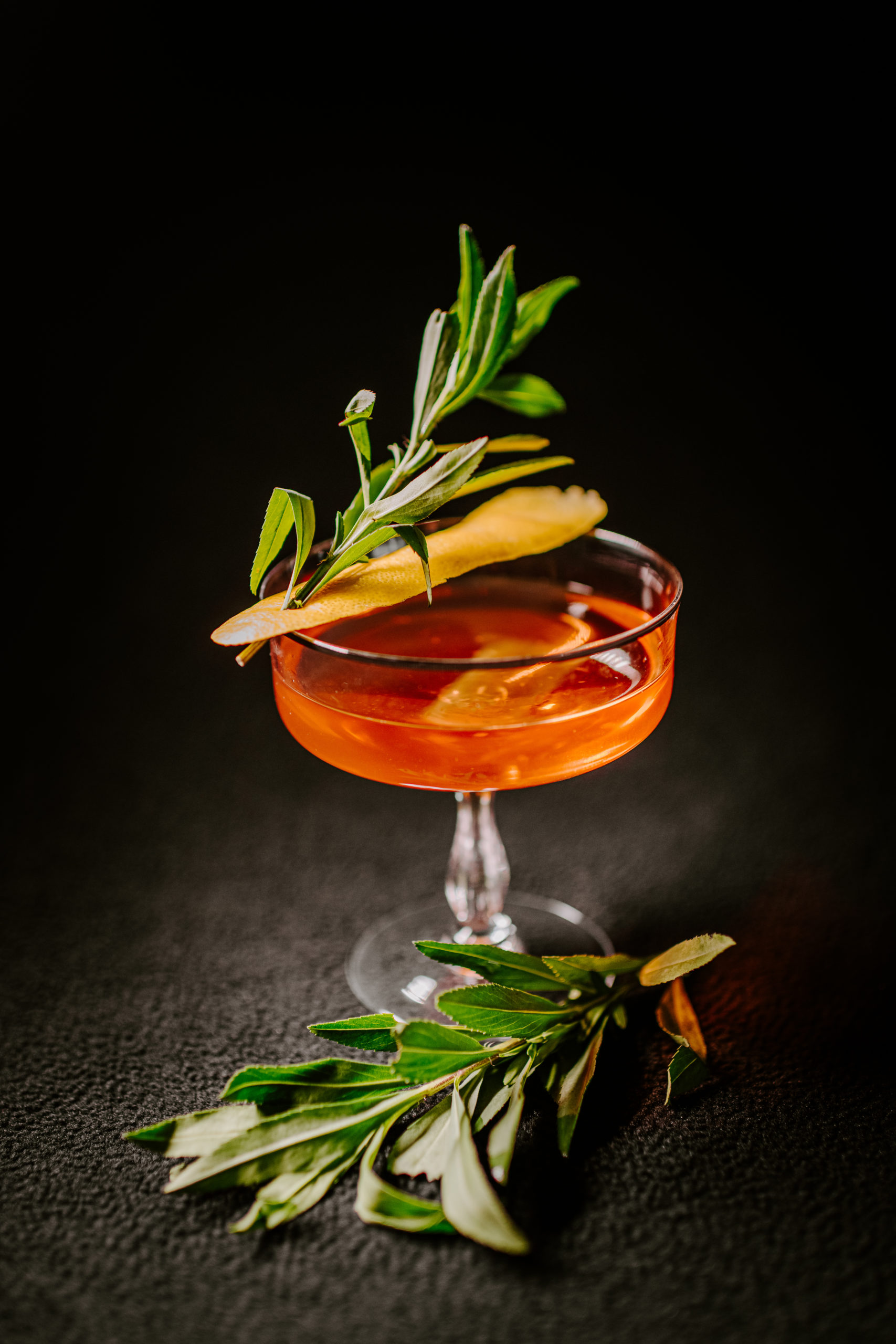
Aging Requirements
The primary requirement that defines bourbon as straight is if the distillate has spent a minimum of two years stored in new charred oak barrels. The only exception to this rule is corn whiskey, which is aged in uncharred or used oak barrels.
During the aging process, Bourbon oxidizes and penetrates the wood. This oxidizing extracts many of the flavor compounds such as caramelized sugars, giving Bourbon its sweet and smoky flavor notes.
Straight whiskey that is aged for less than four years is required by law to be labeled with an age statement that describes the actual age of the whiskey that is bottled. Other than the age statement, the only other label that relates to the age of whiskey is the “Bottled in Bond” label. All bonded whiskeys are required to be aged for at least four years.
Limits of Distillation
The secondary difference between Bourbon whiskey and straight Bourbon whiskey is that there is an 80% ABV (160 proof) concentration limit for the distillation of straight whiskey. A distillation that exceeds this alcohol content removes many of the flavors from the original fermented mash that was used in the distillation process. As a result, the spirit has a more neutral grain flavor profile.
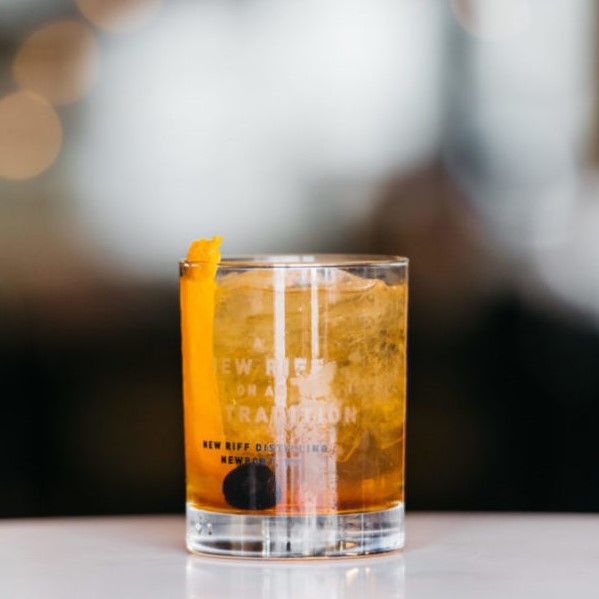
New Riff Straight Bourbon
New Riff Distilling’s core Bourbon expression is a genuinely high-rye, full bodied whiskey offering savory, spicy character. Building upon America’s 1897 Bottled-in-Bond Act—already the highest quality standard for aged spirits in the world—New Riff Bourbon is Bottled In Bond Without Chill Filtration. Featuring a mash bill of non-GMO grains at 65% corn,30% rye, and 5% malted barley, it represents a new riff on Kentucky’s most hallowed whiskey traditions.Discover the best variety of our flagship bourbons and other spirits today.
Rye is one of the original domesticated Old World grains that was brought to the New World. It takes about two acres planted to rye to make one batch of New Riff rye whiskey.
Distilling an heirloom grain whiskey requires two primary ingredients – a whole lot of seeds and a whole lot of time. Heirloom rye whiskey is truly a patient process. Follow us along the journey of heirloom rye to learn about one of America’s most historic whiskeys.
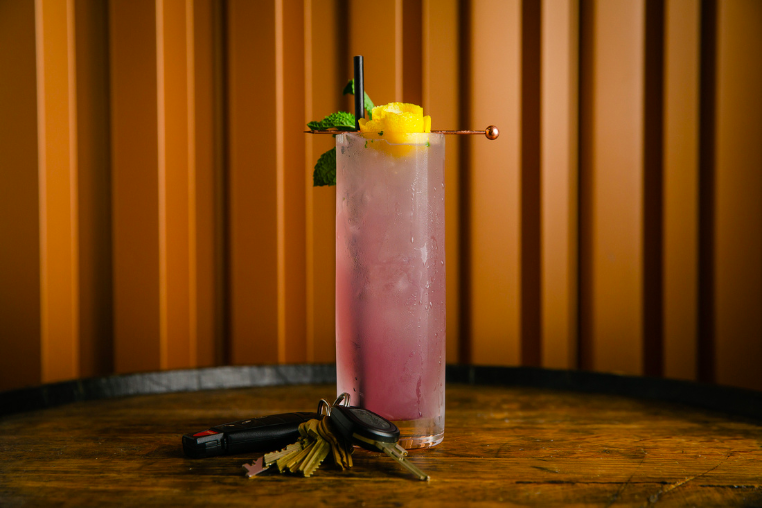
What You Need to Know About Heirloom Rye
As of the turn of the century, rye whiskey had been in decline for decades. According to the US Department of Agriculture, American rye production peaked in 1919 when farmers harvested over 7 million acres of the seed to be used for many functions, primarily in bread production. Since 2000, the harvest has hovered at only 275,000 acres every year. Roughly 80 percent of winter rye planted every year isn’t even harvested and produced into bread – most winter rye is grown as a cover crop seed to protect soil. The cover crop seed has had a long decline and there isn’t a lot of practical or commercial interest in different varieties of the seed.
A great amount of commercial rye used for bread and other consumer goods is strictly a commodity grain from a mix of different strains. When grain merchants buy grain, they buy from multiple farms. They’ll buy a bin with dozens of other farms within that bin. The farmers know what they’re growing, but merchants have no idea unless they buy directly from the farmer themselves.
Heirloom rye presents a great challenge to those that grow heirloom crops. Winter rye is a promiscuous grain that can easily cross-pollinate. Winter rye seeds must be grown in isolation to accurately produce seed varieties. If they are allowed to cross with other varieties, the identity of the original will be lost. Farmers and distillers that use heirloom rye have to start with seeds from one particularly known provenance.
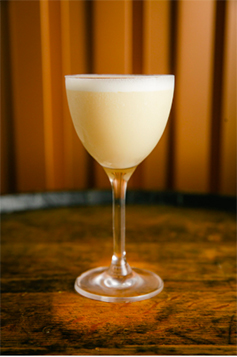
What does ‘Heirloom’ mean?
Depending on the person, ‘heirloom’ can have many different meetings. Typically, the term refers to older varieties of rye (or other plants, or livestock) that date from the early 20th century or even back into the 1800s. Older varieties are often discarded by farmers due to their lower yield. For distillers, however, a low yield can be beneficial because there are more flavorful grains wherever there are lower yields. This is the same for wine, where lower-yielding vines are highly prized for depth of flavor in their grapes.
Heirloom grains, including rye, have disadvantages that can make them tough to work with. They’re less disease-resistant and more susceptible to insects. The older varieties are more susceptible to disease, and don’t yield as well. For those who produce rye whiskey, like New Riff, the choice to grow single-strain or heirloom rye is impactful. A way to showcase the provenance of rye grains is through the wonderful rye whiskey from New Riff Distilling.
The Heirloom Flavor
It’s easy to discover what other heirloom foods taste like – you can simply eat them and find out. Whiskey takes a lot longer, and its unique challenge of reviving rye means that the grain isn’t as developed as other heirloom varieties like corn and wheat for whiskey and flour. This makes it hard to predict what will affect the flavor of fully matured whiskey. However, the early results are often promising. Depending on the rye, you can find striking and pronounced flavor notes and mouthfeel that can’t be found in other varieties of rye. This makes them all individually unique.
Each rye variety has a particular flavor note. Not only the common spice flavor found in typical rye, but back notes of other flavors like fruit that can be found just underneath other common flavors, making heirloom rye quite delicious.
Whiskey distilleries that use corn and wheat have many more years of experience using heirloom strains, and finding the flavor differences between strains has quickly become more important. Bourbons made with heirloom corn such as Oaxacan Green or Blue Clarage have subtle differences in flavor that will become more pronounced over time. These flavors include caramel and butterscotch found in the blue popcorn.
Rather than distilling heirloom strains completely on their own, some distilleries incorporate a mash bill with higher yields from non-heirloom strains. The variety of heirloom strains add unique flavors even in smaller amounts. Using heirlooms as part of a blend can help increase yield from the fermentation process as well.
However, heirloom rye has not advanced this far along. Few heirloom ryes are produced today, and the day distillers can experiment with many varieties is still far away. However, our history with the development of heirloom corn may suggest that the future of heirloom rye might be fascinating.
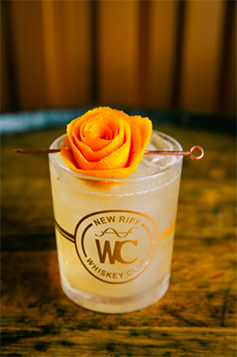
The History of Heirloom
Due to prohibition, rye whiskey steadily declined thanks to consumer preferences for beer, wine, and clear spirits. While Bourbon and Tennessee Whiskey still held a small market share, large Bourbon distilleries only produced rye whiskey on a limited basis. It wasn’t until the cocktail revolution began in the early 2000s that quality whiskey for classic cocktail recipes began to take center stage once more.
Today, two primary trends have emerged when it comes to Rye whiskey. The first is a return to the traditional whiskey mash bills style that showcases the unique balance of the rye interacting with the corn, wheat, and barley. Many whiskey enthusiasts love the flavor and history that follow the traditional Rye distilling process. The second trend is variation in the secondary or tertiary ingredients when brewers experiment with malts, oats, and other brewer’s modifiers. These whiskeys allow distilleries and bartenders to push the boundaries on the base spirit and create cocktails that express specific personal creativity.
Interested in learning more about our independent spirits? Follow us to our Balboa Rye Whiskey page to see how we make great whiskey with heirloom rye.
New Riff Distilling 2021. All rights reserved.
